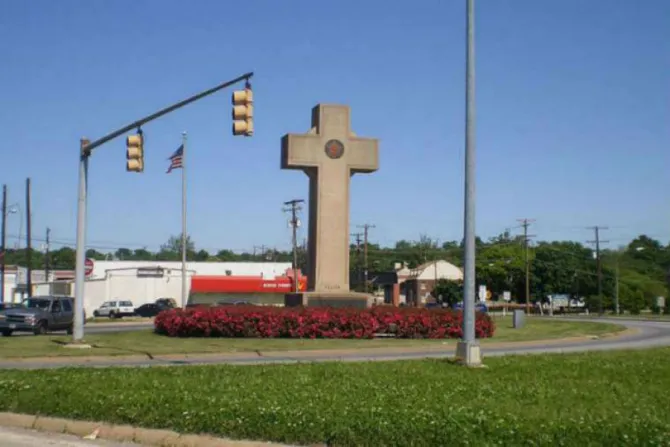Washington D.C., Feb 27, 2019 / 16:00 pm
The Supreme Court heard oral arguments Wednesday in the case Maryland-National Capital Park and Planning Commission v. American Humanist Association, which will determine whether a cross-shaped monument honoring those killed in WWI is a violation of the First Amendment.
The Bladensburg Peace Cross is a 40-foot stone cross erected in 1925 in Prince George's County, Maryland. The Maryland-National Capital Park and Planning Commission has performed regular maintenance around the monument since 1961, as it is located on a median in the middle of a public road. This, the American Humanist Association has argued, is entangling government unnecessarily with religion.
Atheist and secular campaigners have contend that because of the cruciform shape of the monument, its display and maintenance on public land constitutes a public affirmation of religion.
Under questioning by the justices, the Supreme Court heard Wednesday that there was a legitimate, historical context to the monument, and that the cross shape was commonly used at the time to honor those killed in wars.
A lawyer representing the park commission pointed out that the court had previously ruled that in certain cases religious symbols may be appropriate to for public display, depending on context.
Members of the court appeared to acknowledge that attitudes have changed since the Bladensburg Peace Cross was first erected.
"History counts," said Justice Stephen Breyer, who suggested that while a similar monument would not be appropriate in the modern context, that did not mean that all past monuments should be taken down.
Justice Elena Kagan agreed that for many people, a cross is a "very natural way" for people to mourn those who have died, and that it carries a different meaning in the context of World War I.
(Story continues below)
There are numerous other cross-shaped monuments on public land, including at Arlington National Cemetery.
The American Humanist Association and a small number of Prince George's County residents filed suit against the park and planning commission and the American Legion in 2014, and argued that a cross-shaped monument on public land was a violation of the First Amendment's Establishment Clause.
The two cases were consolidated into one when the Supreme Court granted certiorari and agreed to hear the case.
The lawsuit was originally brought in 2014 and rejected by the District Court, which held that it was "uncontroverted" that the maintenance and display of the memorial was not "driven by a religious purpose whatsoever."
In 2017, the Fourth Circuit Court of Appeals ruled that the monument was unconstitutional. In November of 2018, the Supreme Court granted certiorari.
The monument's construction was funded by mothers of the dead servicemen as well as the American Legion. The cross contains a plaque bearing the names of 49 Prince George's County men who were killed in the war.
The American Legion's logo is featured prominently on the cross, along with the words "valor," "endurance," "devotion" and "wisdom."
Aside from the shape, there are no explicit references to any Judeo-Christian religion, such as Bible verses or other inscriptions, on the monument.
The American Legion hosts secular and patriotic events around the monument, but religious ceremonies have not been held at the peace cross in nearly nine decades.
A decision in the case is expected by June.


